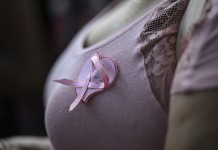Most cities in the world will be painted red as the world marks world hemophilia day.
World hemophilia day is celebrated annually on the 17th of April. This comes after a whole month of creating awareness since March is hemophilia awareness month but what really is hemophilia?
According to World Federation of Hemophilia Organisation website, Haemophilia is a bleeding disorder and people with hemophilia do not bleed any faster than normal, but they can bleed for a longer time. Their blood does not have enough clotting factor. Clotting factor is a protein in blood that controls bleeding.
Hemophilia is quite rare. About 1 in 10,000 people are born with it.
Here in Kenya, it is estimated that 5000 people have hemophilia. However, only 650 have been tested and are known to have hemophilia.
Haemophilia is an inherited disease meaning it is passed on through a parents genes. The hemophilia gene is passed down from parent to a child. The genes for hemophilia A and B are on the X chromosome. For this reason, hemophilia is called an X-linked (or sex-linked) disorder.
Types of hemophilia
The most common type of hemophilia is hemophilia A. This means the person does not have enough clotting factor VIII (factor eight).
Hemophilia B is less common. A person with hemophilia B does not have enough factor IX (factor nine). The result is the same for people with hemophilia A and B; that is, they bleed for a longer time than normal.
There are three levels of severity of hemophilia: mild, moderate, and severe. The severity of hemophilia depends on the amount of clotting factor in the person’s blood.
Any person (male or female) with 5-40 per cent of the normal amount of clotting factor has mild hemophilia.
A person with between 1-5 per cent of the normal amount of clotting factor has moderate hemophilia.
A person with less than 1 per cent of the normal amount of clotting factor has severe hemophilia.
Signs and symptoms
Bruises from falls are usually the first signs of hemophilia.
Until the age of 2, bleeding into joints is uncommon. Most bleeds are surface bruises. When babies are learning to walk, they fall frequently and suffer many bumps and bruises.
Bleeding into the joints, soft tissues and muscles is seen more frequently after the age of two. Bleeding into joints (knees, elbows, ankles, shoulders, hips may also be experienced.
Also, bleeding in the mouth from a cut, bitten tongue or loss of a tooth (especially in children) and blood in the urine (hematuria).
Treatment.
Hemophilia has no cure. However, drugs that increase the clotting factors in the body are available, namely factor viii and ix named after the missing clotting factors. Haemophilia A patients are given factor viii while hemophilia B patients are given factor ix.
These drugs are administered through intravenous injection.
Factor viii and ix are very costly.
A cure is, however, one step closer following groundbreaking results from a gene therapy trial.
About 13 patients took part in the trial in the UK and eleven of them showed normal levels of factor with all 13 stopping previous medications they were on.
Here in Kenya patients still depend on donors to get these drugs as many cannot afford them.
Due to the costly treatment of hemophilia the Kenya Hemophilia association which consists of parents, patients and doctors are asking the government to buy the factors for easy access by patients countrywide.
1000 international units (iu) of a factor could cost upwards of sh.100,000.
In Kenya, the factors are available at only 3 centres; Kenyatta National Hospital, Moi Teaching and referral Eldoret and recently opened center at Coast General Hospital in Mombasa
Kenyans will mark this day at a gala dinner to be held at the Sarova Panafric in Nairobi.













